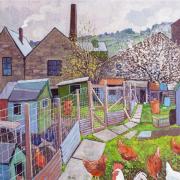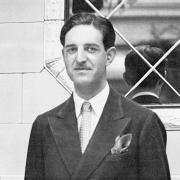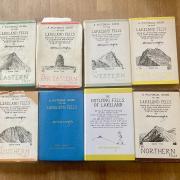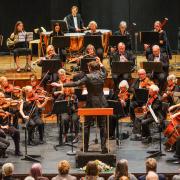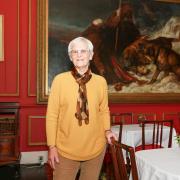The John O’Gaunt Rowing Club has a remarkable history – including the time one crew greased their shorts to make them go faster! Martin Pilkington reports.

At a Sunday morning training and coaching session, lightweight craft are manhandled into the water from an impressive boathouse beside the Lune. Enthusiastic juniors, and some not so junior, scull away from the bank, heading upriver towards the 18th century aqueduct. It is a scene observers 175 years ago would have found fairly familiar.
One of the city’s most celebrated Victorian figures, architect Edmund Sharpe, was the moving force behind what was originally the Lancaster Rowing Club, one of the oldest in Britain. ‘He came here in the 1830s and started his architectural practice, and was part of a group that established a cricket club. On September 23rd 1842 at a meeting to disband the cricket club, Sharpe moved to form a rowing club in its place,’ explains Mike Pugh, its current chairman. ‘Sharpe was our first captain, and the two architects forever linked with him, Paley and Austin, both served in that role shortly afterwards.’ Sharpe even sold the club two of his own boats to get it started.
The organisation thrived until scandal hit in 1865. ‘A Royal Commission found many members of the club were involved in a general election bribery case,’ says Mike. ‘This led to the club splitting along political lines – the Tories kept the old name, and the Liberals created the John O’Gaunt.’ They didn’t re-unite until the 1930s, when hard times drove the Lancaster section to merge with their rivals.
Another famous Lancaster name provided the club with its home in Halton. ‘We benefitted from the philanthropy of Lord Ashton, the linoleum millionaire, who donated land along the river to the city. We were granted a covenant to keep a boathouse on the land as long as we can muster 25 members and pay 2s 6d a year rent!’ Mike continues.

The club has played a part in the development of some famous names of its own over the years. Current president Pauline Jansen represented Great Britain at the 1980 Olympics; in the 1950s Doug Melvin, a previous president, twice won the prestigious Wingfield Sculls event on the Thames; and more recently Mason and Scott Durant represented the club before gaining national honours. Scott last year was part of the men’s Gold Medal eight in Rio.
As long-time member, Colin McDermid explains that the club also played a rather quirky part in a technical advancement in the sport. ‘The club’s 1870 four won everything going except the Stewards’ Challenge Cup at Henley, where they lost out to Oxford Etonians. Our four experimented with ‘the sliding principle.’ They didn’t have sliding seats or runners, but put extra wide seats in the boat and greased their shorts!’
‘A report of that race said they were going like a piston in a pair of scissors, but that the longer steadier stroke of the Oxford Etonians won out,’ says Mike, with a note of regret.
Another date etched in club lore is December 15th, 2015, when Storm Desmond struck the city. ‘The river rose 4m higher than normal, well into the first floor of the boathouse,’ says Mike. A mark on the outer wall shows exactly how far up it reached. ‘We had £80,000 worth of damage,’ says treasurer Steve Sullivan, ‘and we had several months of work without rowing before we recovered, with a third of our boats written off and another third damaged.’ Insurance, their financial reserves and plenty of support from local and national bodies and individual donors saw them through the crisis.
Today the club has nearly 100 members, including a very healthy junior section, and at the other end of the age spectrum has recently forged strong links with the U3A as part of a national healthy ageing initiative. New members are always welcome, with newcomers to the sport catered for under a British Rowing learn-to-row programme.
The John O’Gaunt marked its 175th anniversary with events through the year – a regatta in May; a dinner in September on the precise day the club was formed and this month at a Head of the Lune contest of time-trial races starting from what was the riverside home of Edmund Sharpe.
A painting of the river, boathouse, castle and priory church has been commissioned from local artist Charles Jacobs, with prints to be sold as part of a fundraising drive.
But perhaps the most pleasing moment for members present and past happened at rowing’s spiritual home, Henley, this summer. ‘The Royal Regatta granted us a row past, a great accolade, normally to celebrate a major championship win,’ says Mike. ‘We got an eight together – two men, two women, two boys and two girls, representing the club as it is today – who rowed the Henley course. It’s the rowing equivalent of a lap of honour.’
Next month - a page of pictures as club members celebrate 175 years






